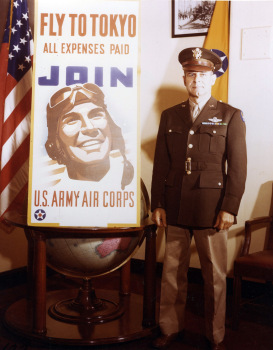
Brig. Gen. James Doolittle poses beside an Air Corps recruiting poster that alludes to his bombing raid on Japan in April 1942. (c) 1943
Led by Lt. Col. James H. Doolittle, the raid was launched from USS Hornet, commanded by Capt. Marc Mitscher and escorted by ships under the command of Vice Adm. “Bull” Halsey aboard his flagship, USS Enterprise.
The extraordinary joint Doolittle Raid showed Imperial Japan’s military leaders their vulnerability and America’s resolve.
The raid also demonstrated innovation, courage and resilience.
The five-man B-25 crews trained relentlessly prior to their mission, with specialized training led by Navy flight instructor Lt. Henry F. Miller. The Army Air Force made ingenious modifications so the bombers could have extra fuel but less weight.
Pilots, all volunteers, needed to be extremely fearless, taking off in their huge planes from a short flight deck. On rough seas they launched in bitter cold, 75-knot winds and foam-flecked spray, as Sailors aboard recalled.
Doolittle, as his team’s leader, took off first. His success inspired the other pilots just as their entire mission would inspire the nation – putting action to the nationwide words of resolve heard throughout the world: “Remember Pearl Harbor!”
[…]
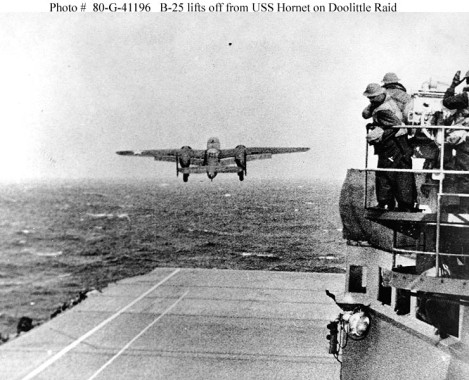
An Army Air Force B-25B bomber takes off from USS Hornet (CV 8) at the start of the raid, April 18, 1942. Note men watching from the signal lamp platform at right. (Official U.S. Navy Photograph, now in the collections of the U.S. National Archives – Courtesy of the NHHC Photo archives)
Seven Doolittle Raiders were killed in the mission: Two drowned and a third was killed by the fall after bailing out; eight were captured by the Japanese. Three of the eight POWs were executed Oct. 15, 1942, and another died of malnutrition Dec. 1, 1943. The surviving four POWs were released in August 1945.
The Raiders who landed in China were assisted by American missionary Rev. John M. Birch, whose contacts within Japanese-occupied China helped the Raiders to escape. Afterward, Birch was commissioned a lieutenant in the Army Air Force, continuing his work as a missionary while gathering intelligence on the Japanese. He was killed Aug. 25, 1945, at the age of 27, during a confrontation with Chinese Communists. The John Birch Society honors Birch, a recipient of both the Legion of Merit and the Distinguished Service Medal.
Even though the Doolittle Raiders bombed Tokyo, it was the Chinese who suffered the most from the raid. Furious the Chinese nationalists were protecting the Americans, the Japanese retaliated against several coastal cities suspected of harboring the Americans, killing an estimated 250,000 Chinese citizens.
Doolittle was so convinced his mission had been a failure, he was convinced he would face a court-martial upon his return to the United States. Instead, he was promoted to general, skipping the rank of colonel. He and all of his Raiders were awarded the Distinguished Flying Cross.
Mitscher served in a variety of command leadership positions for the rest of World War II, earning the rank of admiral and title as Commander in Chief, U.S. Atlantic Fleet.

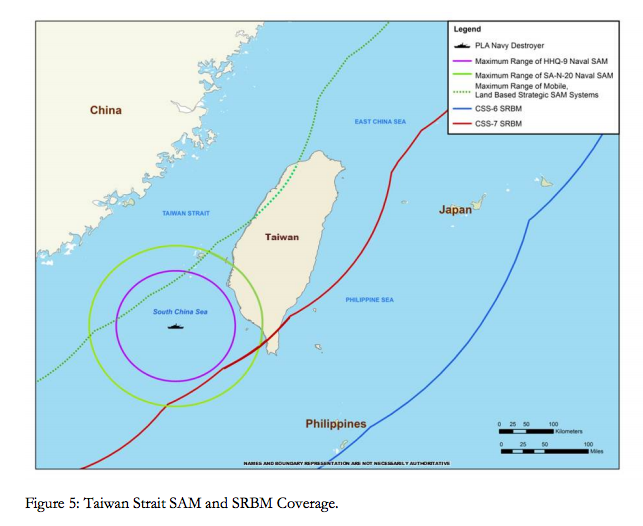
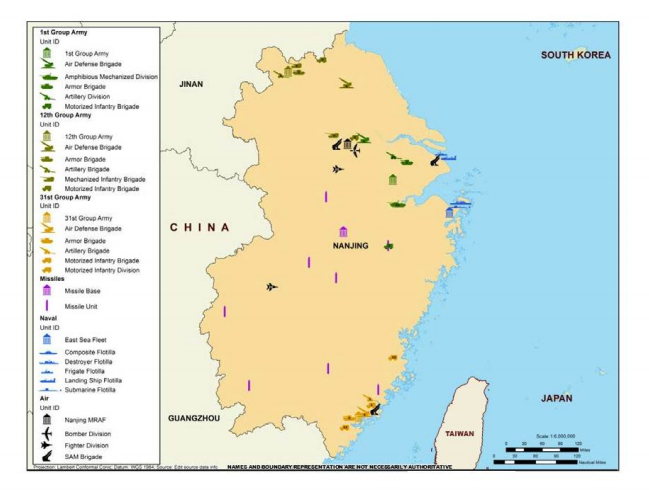
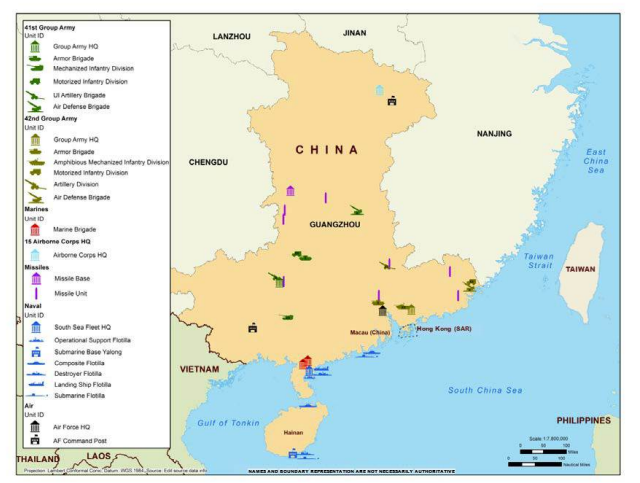


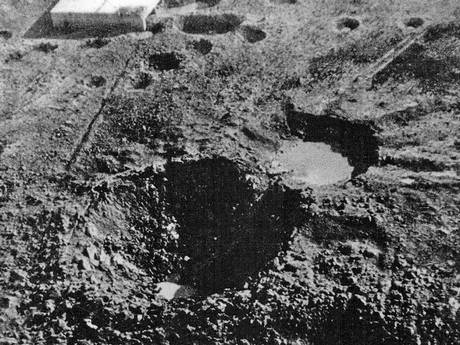
 Private William Penman, Scots Guards, died 1915 at
Private William Penman, Scots Guards, died 1915 at 

